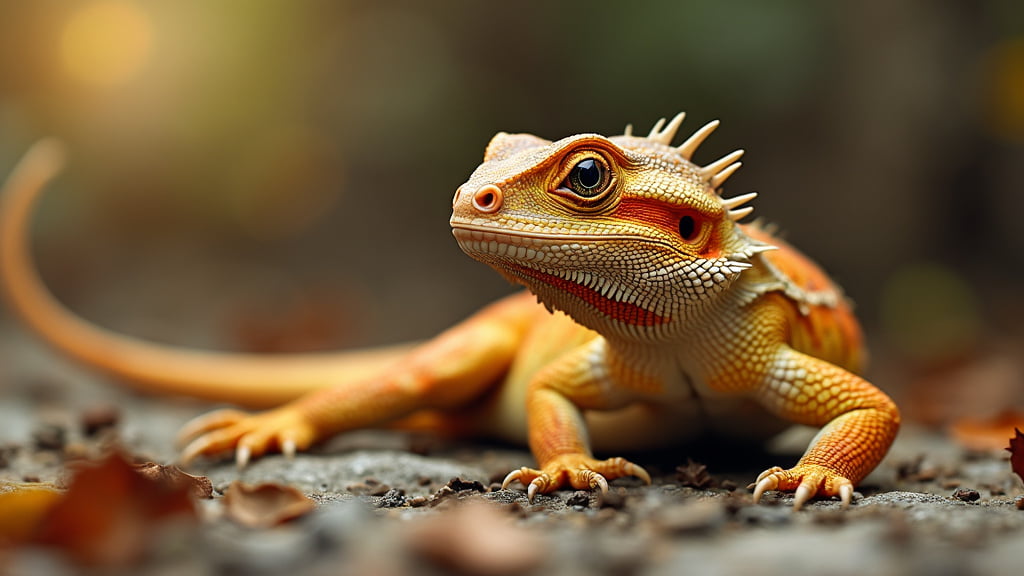Introduction
Owning a bearded dragon comes with a delightful mix of unique challenges and rewarding experiences. One of the most critical aspects of ensuring your scaly friend’s health and well-being is managing their habitat’s heating. As the seasons change, so too must the environment inside your bearded dragon’s enclosure. This article will delve into seasonal heating adjustments that every bearded dragon owner needs to make to maintain optimal living conditions. Follow these expert tips to ensure your dragon remains healthy and happy all year round.
Understanding Bearded Dragon Heating Needs
Why is Proper Heating Important?
A bearded dragon’s health is directly tied to the temperatures within their enclosure. These ectothermic reptiles rely on external heat sources to regulate their body temperature, enabling them to digest food, absorb nutrients, and maintain a robust immune system. Neglecting proper heating can lead to severe health issues, including metabolic bone disease, respiratory infections, and digestive problems.
Ideal Temperature Ranges
For optimal health, a bearded dragon’s enclosure should have a gradient of temperatures:
- Basking Spot: 38-42°C (100-107°F)
- Cool Side: 22-26°C (72-78°F)
- Night-time Temperature: 18-22°C (65-72°F)
Maintaining this gradient is crucial, as it allows the bearded dragon to move between areas to regulate its body temperature.
Seasonal Heating Adjustments
Summer Heating Adjustments
Summers can get quite hot, impacting your bearded dragon’s enclosure temperatures. Here are some adjustments to make:
Monitor and Adjust
- Temperature Monitoring: Regularly check the temperatures using reliable thermometers placed at different spots in the enclosure.
- Adjusting Heat Sources: Reduce the wattage of heat bulbs if the enclosure temperatures rise above optimal. Alternatively, consider using a thermostat to automate the heating process, ensuring it stays within the safe range.
Environment Control
- Air Conditioning: If you use air conditioning in your home, keep an eye on the temperatures in the enclosure. An abrupt drop in temperature can be harmful.
- Enhanced Ventilation: Increase airflow by slightly adjusting the lid, ensuring the enclosure has a steady, comfortable breeze.
Winter Heating Adjustments
Winters can present a different set of challenges as temperatures drop. Here’s how to ensure your bearded dragon stays warm:
Supplemental Heating
- Ceramic Heat Emitters: These provide warmth without emitting light, making them perfect for maintaining night-time temperatures without disturbing the dragon’s sleep cycle.
- Under Tank Heaters: These can be used in conjunction with overhead heat to maintain consistent warmth, especially critical during the night.
Insulation Tactics
- Insulating the Enclosure: Use insulating materials like Styrofoam or thermal blankets around the tank to retain heat, especially in colder regions.
- Room Positioning: Move the enclosure to a warmer part of the house, away from drafty windows or doors.
Transitional Seasons: Spring and Autumn
Transitioning between extreme seasons requires gradual adjustments to avoid shocking your bearded dragon.
Gradual Changes
- Incremental Adjustments: Gradually adjust the heating elements to mimic the natural temperature changes. Increase or decrease temperatures by small increments over several weeks.
- Regular Monitoring: Monitor the temperatures more frequently during these times to catch any inconsistencies early.
External Influences and Adjustments
Natural Sunlight
- Safe Exposure: Allow supervised natural sunlight exposure for a few hours a week during milder weather. This can be beneficial for both their physical and psychological well-being.
- Avoid Direct Harsh Sunlight: Never leave your bearded dragon in direct sun without supervision, as it can cause overheating and burns.
Humidity Control
- Evaporation and Humidity: Seasonal changes can affect the humidity levels in your dragon’s enclosure. During winter, you might need to add a bit of moisture, while in summer, you might need to manage the evaporation of water.
Conclusion
Owning a bearded dragon requires attentiveness to their unique environmental needs, particularly when it comes to seasonal heating adjustments. By following these tips and being proactive in monitoring and adjusting your bearded dragon’s habitat, you can ensure they remain healthy and comfortable throughout the year. Remember, always consult with a veterinarian for any health concerns specific to your dragon.
—
Stay tuned for more insightful tips and expert advice on creating optimal living conditions for your exotic pets. For further reading, check out our comprehensive care guide for bearded dragons or visit our vet-recommended thermal care products.
—
Meta Description
Ensure your bearded dragon stays healthy and comfortable year-round with these essential seasonal heating adjustments. Discover expert tips and practical advice on maintaining optimal temperatures in your dragon’s enclosure, no matter the weather.

